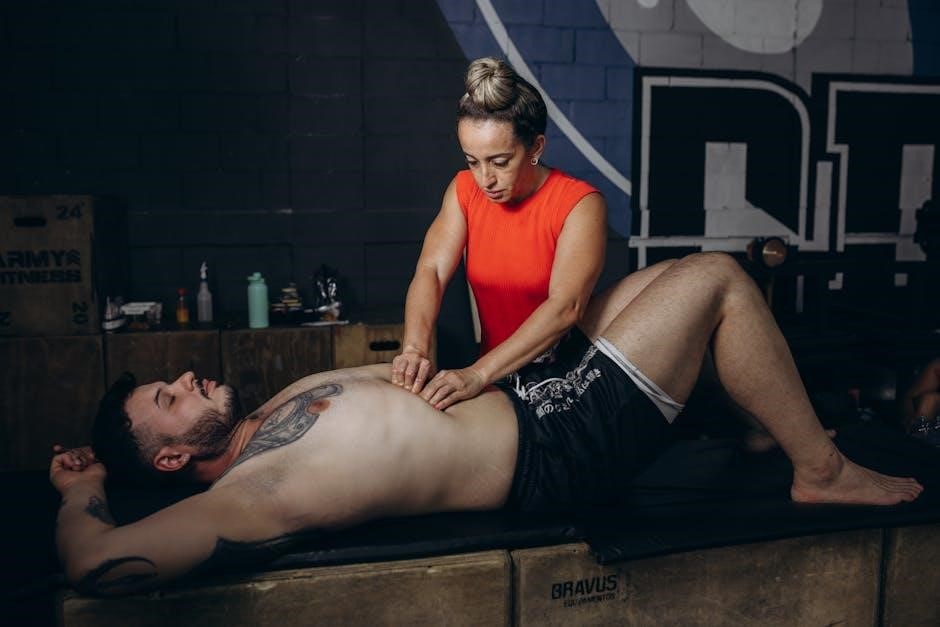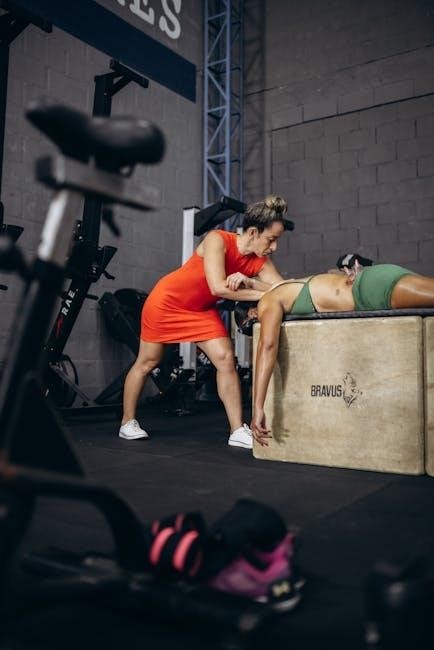
Manual reclining allows users to adjust their seating position using a lever or handle, providing comfort and relaxation in various settings, including homes, offices, and public spaces․
Definition and Purpose
Manual reclining refers to the process of adjusting the position of a chair or sofa to a reclined state using manual mechanisms, such as levers or handles․ This feature allows users to customize their seating experience, providing comfort and relaxation․ The purpose of manual reclining is to offer a convenient and effortless way to adjust the seating position, without the need for external power sources․ Manual reclining mechanisms are designed to be user-friendly, allowing individuals to easily adjust the chair or sofa to their desired position․ This feature is particularly useful in areas where power outlets are limited or unavailable, making it a practical solution for various settings, including homes, offices, and public spaces, where comfort and versatility are essential․

Types of Manual Recliner Mechanisms
Manual recliner mechanisms include various types, such as push-on-arm and manual low leg mechanisms, offering different functionalities and user experiences always and everywhere easily․
Overview of Mechanisms
Manual recliner mechanisms are designed to provide a smooth and comfortable reclining experience․ These mechanisms typically consist of a system of levers, gears, and springs that work together to allow the user to adjust their seating position․ The mechanisms are usually built into the frame of the chair or sofa, and are designed to be durable and long-lasting․ They are also often designed to be easy to use, with a simple and intuitive interface that allows the user to adjust their seating position with minimal effort․ Overall, manual recliner mechanisms are an important component of many types of furniture, and are designed to provide a comfortable and relaxing seating experience for users․ They are available in various types and designs, and can be used in a wide range of applications, including homes, offices, and public spaces, every day․

Components of Manual Recliner Mechanisms
Recliner mechanisms include metal frames, springs, and levers for smooth operation always․
Recliner Mechanism Components
Manual recliner mechanisms consist of various components, including metal frames, springs, and levers, which work together to provide smooth and comfortable reclining motion․ The metal frame serves as the base of the mechanism, while the springs provide the necessary tension and support․ The levers, on the other hand, allow users to easily adjust the reclining position․ Additionally, some recliner mechanisms may also include other components, such as gears and bearings, which help to facilitate the reclining motion․ These components are carefully designed and engineered to ensure that the recliner mechanism operates smoothly and efficiently, providing users with a comfortable and relaxing experience․ The quality and durability of these components are crucial in determining the overall performance and lifespan of the recliner mechanism․ Proper maintenance and care can also help to extend the lifespan of these components․

Benefits of Manual Reclining
Manual reclining provides comfort, relaxation, and improved posture, enhancing overall well-being and reducing stress levels naturally every day․
Advantages of Manual Recliners
Manual recliners offer several advantages, including ease of use and maintenance, as they do not require any power source, making them a convenient option for various settings․ They are also cost-effective and environmentally friendly, as they do not consume any energy․ Additionally, manual recliners provide a range of motion, allowing users to adjust their seating position to suit their needs, promoting comfort and relaxation․ The manual mechanism also allows for a smoother and more controlled reclining motion, reducing the risk of accidents and injuries․ Overall, manual recliners are a practical and comfortable seating solution, suitable for homes, offices, and public spaces, providing numerous benefits for users, including improved posture and reduced stress levels, making them a popular choice among consumers, with many manufacturers offering a range of manual recliner models․

Manufacturers of Manual Recliner Mechanisms
Companies like OKIN and BNM Agencies produce manual recliner mechanisms for various applications and designs, offering quality products, with different features and options available․
Recliner Mechanism Manufacturers
Recliner mechanism manufacturers such as OKIN and BNM Agencies play a crucial role in the production of manual recliner mechanisms․ These companies offer a range of products, including manual and motorized recliner mechanisms, to cater to different design requirements․ Their products are used in various applications, including sofas, chairs, and other furniture pieces․ The manufacturers use high-quality materials and advanced technology to ensure that their products are durable and reliable․ They also provide customization options to meet the specific needs of their clients․ With a strong focus on innovation and customer satisfaction, these manufacturers have established themselves as leading players in the industry, providing recliner mechanisms that are both functional and comfortable, and are used to create a wide range of recliner products, with various features and designs available, making them a popular choice․
Design Considerations for Manual Recliners
Manual recliner design considers factors like space, comfort, and style to create functional furniture pieces with smooth reclining mechanisms and sturdy frames always․
Design Options for Manual Recliners
Manual recliner design options are diverse, offering various styles and configurations to suit different tastes and needs․ The choice of materials, such as wood or metal, can significantly impact the overall aesthetic and functionality of the recliner․ Additionally, designers can select from a range of mechanisms, including push-on-arm or manual release, to create a seamless reclining experience․ Other design options include the incorporation of headrests, lumbar support, and adjustable armrests, which can enhance the comfort and usability of the recliner․ With these design options, manufacturers can create manual recliners that cater to a wide range of users, from casual loungers to individuals requiring specific ergonomic support, ultimately providing a personalized and comfortable seating experience․ Furthermore, designers can also consider factors like space efficiency and versatility․
Manual reclining offers comfort and relaxation with various design options available․
Manual reclining is a type of seating mechanism that allows users to adjust their position for comfort and relaxation․ The key aspect of manual reclining is the use of a lever or handle to control the movement of the chair․ This feature enables users to customize their seating experience according to their preferences․ Manual reclining is commonly used in various settings, including homes, offices, and public spaces․ The benefits of manual reclining include improved posture, reduced fatigue, and enhanced overall comfort․ With its simplicity and effectiveness, manual reclining has become a popular choice for individuals seeking a convenient and relaxing seating solution․ The mechanism is designed to provide a smooth and quiet operation, making it suitable for use in different environments․ Overall, manual reclining offers a practical and comfortable seating option for users․ The design is user-friendly and easy to operate․